Chapter: Health Management in Aquaculture: Harmful and toxic algae
Types of harmful and toxic algal blooms - Health Management in Aquaculture
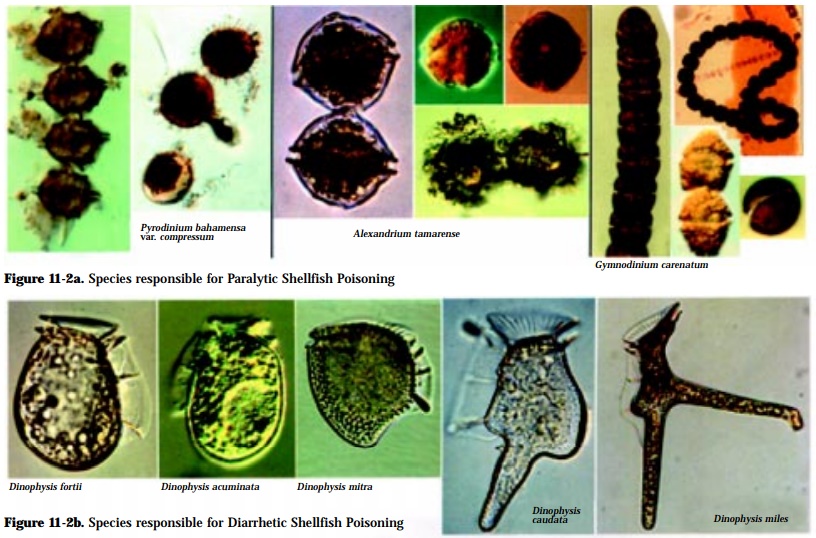
TYPES OF HARMFUL AND TOXIC ALGAL BLOOMS
Type A species
These are species that produce basically harmless water discoloration; how-ever, under exceptional conditions in sheltered bays, the blooms can grow and cause indiscriminate kills of fish and invertebrates from oxygen depletion. The blooms are represented by dinoflagellate species (Gonyaulax polygramma,Noctiluca scintillans, and Scrippsiella trochoidea) and Cyanobacterium (Trichodesmium erythraeum) (Fig. 11-1).
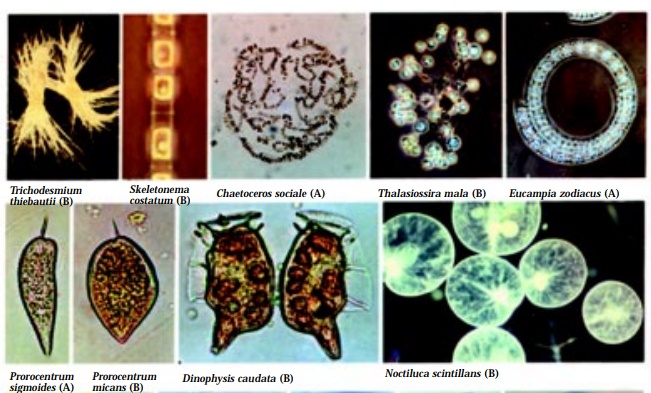
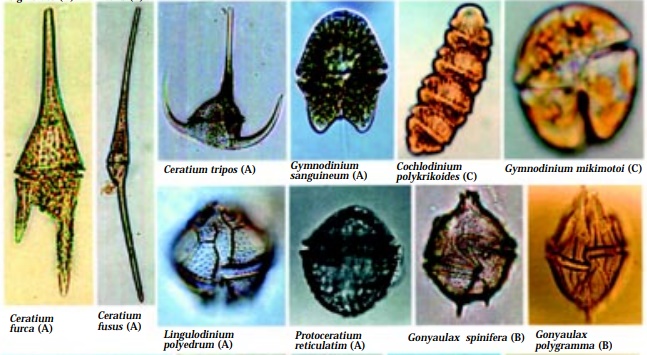
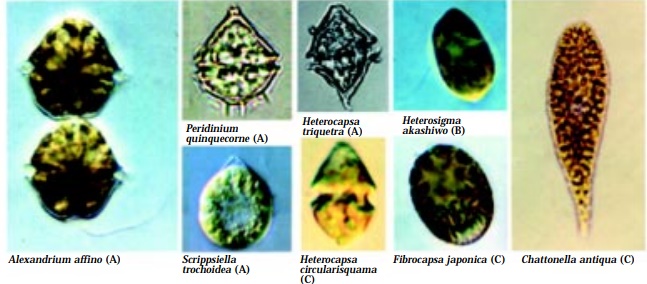
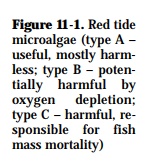
Type B species
Type B species produce potent toxins that find their way through the food chainto humans, causing a variety of gastrointestinal and neurological illnesses such as:
• Paralytic Shellfish Poisoning (PSP) – Examples: dinoflagellates (Alexan-drium acatenella, A. catenella, A. cohorticula, A. fundyense, A. fraterculus, A. minutum, A. tamarense, Gymnodinium catenatum, and Pyrodinium bahamense var. compressum) (Fig. 11-2a).
• Diarrhetic Shellfish Poisoning (DSP) – Examples: dinoflagellates (Dinophysisacuta, D. acuminata, D. fortii, D. norvegica, D. mitra, D. rotundata, Proro-centrum lima) (Fig. 11-2b).
• Neurotoxic Shellfish Poisoning (NSP) – Example: dinoflagellate (Gymno-dinium breve, G. cf. Breve, New Zealand) (Fig. 11-2c).
• Amnesic Shellfish Poisoning (ASP) – Example: diatoms (Pseudo-nitzschiamultiseries, P. pseudodelicatissima, and P. australis) (Fig. 11-2d).
• Ciguatera Fish Poisoning (CFP) – Example: dinoflagellate (Gambierdiscustoxicus, Osteopsis spp., Prorocentrum spp.) (Fig. 11-2e).
• Cyanobacterial Toxic Poisoning (CTP) – Example: cyanobacteria (Anabaenacircinalis, Microcystis aeruginosa, Nodularia spumigena)


Type C species
Species of this type are non-toxic to humans, but harmful to fish and inverte-brates (especially in intensive aquaculture systems) by damaging or clogging their gills.
Examples are diatoms (Chaetoceros convolutus), dinoflagellate (Gymnodiniummikimotoi), prymnesiophytes (Chrysochromulina polylepsis, Prymnesium par-vum, P. patelliferum), and raphidophytes (Heterosigma carterae, Chattonella antiqua).
Related Topics